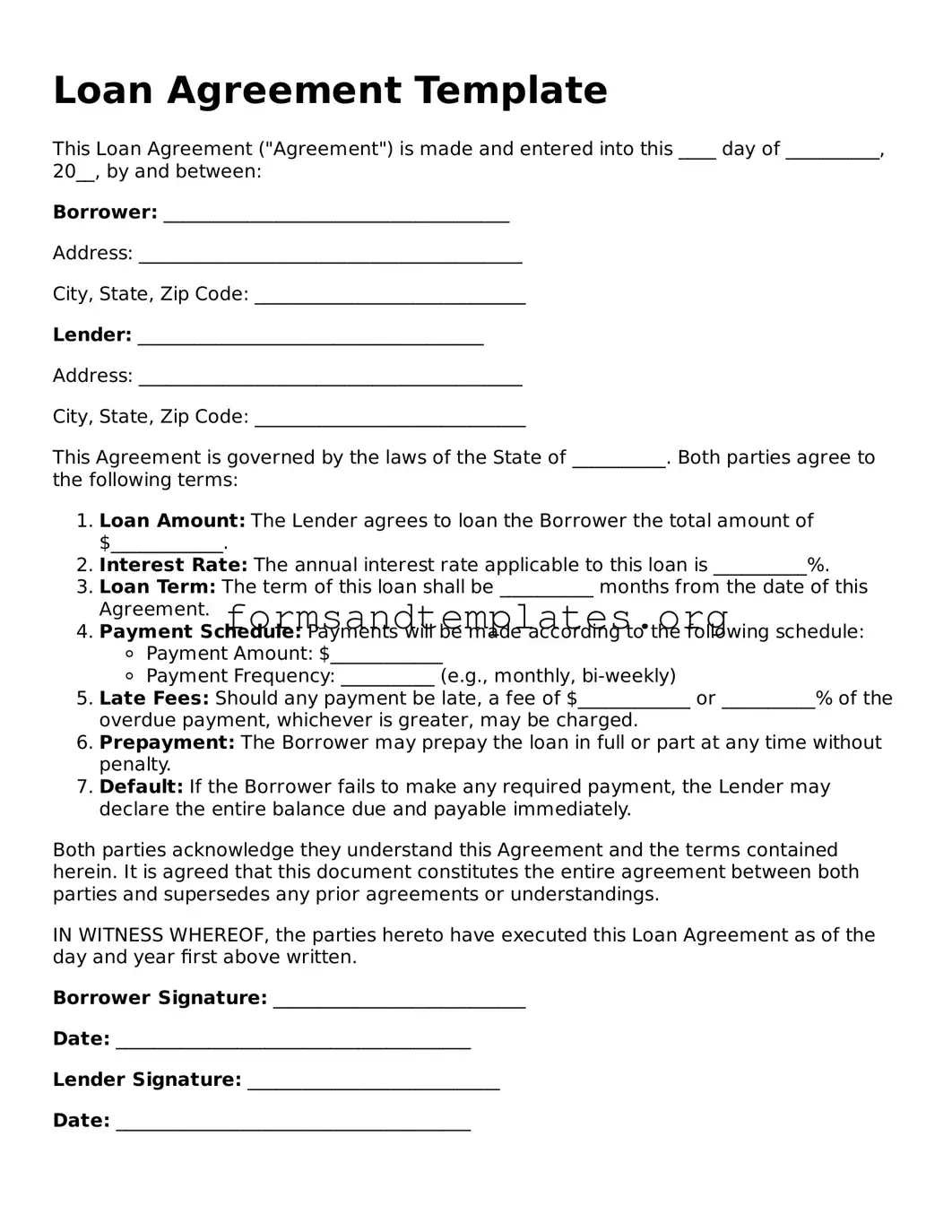Loan Agreement Template
This Loan Agreement ("Agreement") is made and entered into this ____ day of __________, 20__, by and between:
Borrower: _____________________________________
Address: _________________________________________
City, State, Zip Code: _____________________________
Lender: _____________________________________
Address: _________________________________________
City, State, Zip Code: _____________________________
This Agreement is governed by the laws of the State of __________. Both parties agree to the following terms:
- Loan Amount: The Lender agrees to loan the Borrower the total amount of $____________.
- Interest Rate: The annual interest rate applicable to this loan is __________%.
- Loan Term: The term of this loan shall be __________ months from the date of this Agreement.
- Payment Schedule: Payments will be made according to the following schedule:
- Payment Amount: $____________
- Payment Frequency: __________ (e.g., monthly, bi-weekly)
- Late Fees: Should any payment be late, a fee of $____________ or __________% of the overdue payment, whichever is greater, may be charged.
- Prepayment: The Borrower may prepay the loan in full or part at any time without penalty.
- Default: If the Borrower fails to make any required payment, the Lender may declare the entire balance due and payable immediately.
Both parties acknowledge they understand this Agreement and the terms contained herein. It is agreed that this document constitutes the entire agreement between both parties and supersedes any prior agreements or understandings.
IN WITNESS WHEREOF, the parties hereto have executed this Loan Agreement as of the day and year first above written.
Borrower Signature: ___________________________
Date: ______________________________________
Lender Signature: ___________________________
Date: ______________________________________
